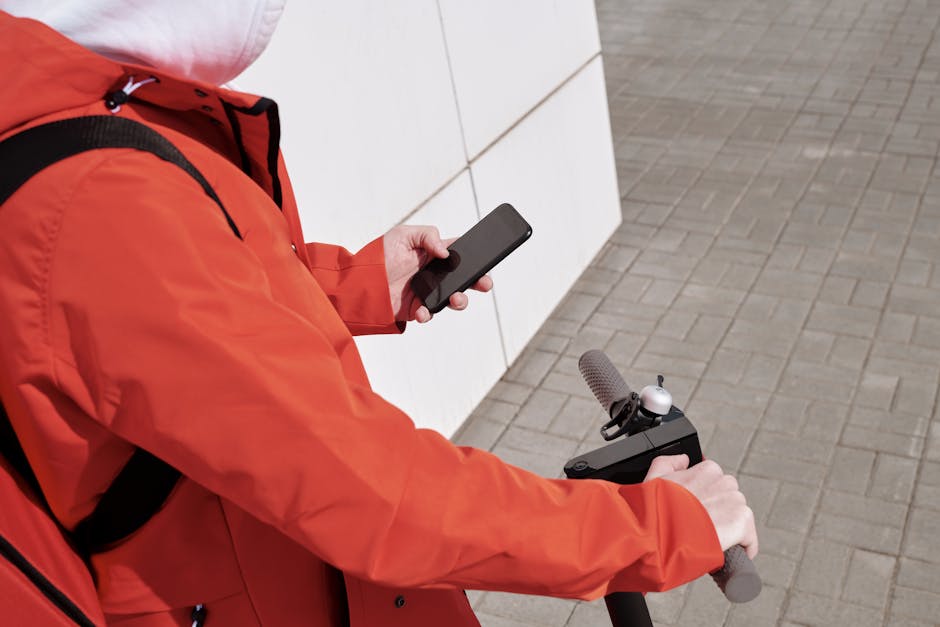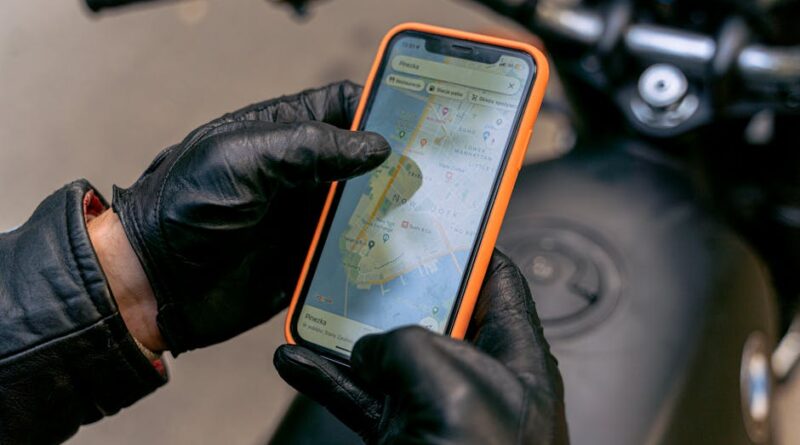Exploring the Top Transportation Apps for Modern Travelers
Transportation apps have revolutionized the way we navigate our cities, plan our journeys, and streamline our commutes. With the rise of smartphones and digital technology, these apps have become indispensable tools for both locals and travelers alike. From ride-sharing services to public transportation guides, there is a plethora of options available to help us get from point A to point B with ease. In this comprehensive guide, we will delve into the top transportation apps that are shaping the way we move around in the modern world.
The Evolution of Transportation Apps

Transportation apps have come a long way since the early days of GPS navigation. Initially, these apps were simple tools that provided directions and estimated travel times. However, with advancements in technology and the advent of the sharing economy, transportation apps have transformed into multifaceted platforms that offer a wide range of services. Today, users can book rides, check public transit schedules, compare prices, and even track the arrival of their vehicles in real-time. The evolution of transportation apps has not only made travel more convenient but has also opened up new possibilities for urban mobility.
The Top Players in the Transportation App Market

When it comes to transportation apps, there are several key players that dominate the market. These apps offer a variety of services, catering to different needs and preferences. Some of the top transportation apps include:
1. Uber
Uber is perhaps the most well-known ride-sharing service in the world. Founded in 2009, Uber has revolutionized the way we hail a ride, allowing users to book a car with just a few taps on their smartphone. With a wide range of vehicle options, competitive pricing, and seamless payment options, Uber has become the go-to transportation app for millions of people around the globe.
2. Lyft
Lyft is another popular ride-sharing service that has gained a strong following in recent years. Known for its friendly drivers, affordable pricing, and commitment to sustainability, Lyft offers a reliable and convenient way to get around town. With features like shared rides and bike rentals, Lyft appeals to a diverse range of users looking for flexible transportation options.
3. Google Maps
Google Maps is not just a navigation app but also a powerful tool for planning and optimizing your commute. With features like real-time traffic updates, public transit information, and street view imagery, Google Maps has become an essential companion for travelers. Whether you’re walking, driving, or taking public transportation, Google Maps can help you find the fastest and most efficient route to your destination.
4. Citymapper
Citymapper is a comprehensive transit app that covers transportation options in major cities around the world. From buses and trains to bikes and scooters, Citymapper helps users navigate urban centers with ease. With detailed route information, live updates, and real-time departure times, Citymapper is a valuable tool for commuters looking to streamline their journeys.
5. Moovit
Moovit is a public transit app that provides information on bus, subway, and train schedules in cities across the globe. With user-generated data, real-time updates, and trip planning features, Moovit helps users navigate public transportation systems with confidence. Whether you’re a local resident or a tourist exploring a new city, Moovit can help you get to your destination on time and hassle-free.
The Benefits of Using Transportation Apps

There are several benefits to using transportation apps that make them an essential tool for modern travelers. Some of the key advantages include:
1. Convenience
Transportation apps make it easy to book a ride, plan your route, and track your progress in real-time. With just a few taps on your smartphone, you can access a wide range of transportation options and services, saving you time and effort in the process.
2. Cost-Effectiveness
Many transportation apps offer competitive pricing, discounts, and special promotions that can help you save money on your travels. By comparing prices and choosing the most cost-effective option, you can minimize your transportation expenses and stick to your budget.
3. Sustainability
Ride-sharing services and public transportation apps contribute to a more sustainable and eco-friendly way of traveling. By sharing rides, using public transit, and reducing the number of cars on the road, transportation apps help minimize carbon emissions and alleviate traffic congestion in urban areas.
4. Safety
Transportation apps prioritize the safety and security of their users, implementing stringent driver screening processes, GPS tracking, and emergency assistance features. Whether you’re traveling alone or with loved ones, you can feel confident knowing that your safety is a top priority when using transportation apps.
Expert Opinions on Transportation Apps

We reached out to transportation experts to get their insights on the impact of transportation apps on urban mobility. Dr. Sarah Johnson, a transportation planner and researcher, shared her thoughts on the role of technology in shaping the future of transportation:
“Transportation apps have revolutionized the way we move around in cities, offering a seamless and integrated experience for travelers. By leveraging real-time data, user feedback, and smart algorithms, these apps have the potential to optimize transportation systems, reduce congestion, and improve the overall quality of urban mobility.”
Dr. Johnson’s perspective highlights the transformative power of transportation apps in creating more efficient, sustainable, and user-centric transportation networks. As technology continues to advance, transportation apps will play an increasingly vital role in shaping the future of mobility.
Common Misconceptions About Transportation Apps
Despite their widespread popularity, transportation apps are not without their misconceptions. One common myth is that transportation apps are only for city dwellers and urban commuters. In reality, transportation apps offer a wide range of services that cater to different lifestyles and travel needs, including suburban areas, rural communities, and long-distance journeys.
Another misconception is that transportation apps are only for tech-savvy individuals. While it’s true that using transportation apps requires a basic level of digital literacy, most apps are designed to be user-friendly and accessible to people of all ages and backgrounds. With simple interfaces, clear instructions, and helpful customer support, transportation apps are designed to be inclusive and accommodating to a diverse user base.
Comparative Analysis of Transportation Apps
When comparing transportation apps, it’s important to consider factors such as pricing, availability, reliability, and user experience. Each app has its own strengths and weaknesses, so it’s essential to evaluate them based on your specific needs and preferences. Here is a comparative analysis of the top transportation apps to help you make an informed decision:
Uber vs. Lyft
Uber and Lyft are two of the most popular ride-sharing services, but they have distinct differences in terms of pricing, driver quality, and service coverage. While Uber tends to have a larger presence in major cities and offers a wider range of vehicle options, Lyft is known for its friendly drivers and community-focused approach. Depending on your location and travel preferences, you may find that one app is better suited to your needs than the other.
Google Maps vs. Citymapper vs. Moovit
Google Maps, Citymapper, and Moovit are all top-rated transportation apps that offer comprehensive route planning and navigation services. While Google Maps is known for its user-friendly interface and accurate mapping data, Citymapper excels at providing real-time transit information and alternative route options. Moovit, on the other hand, is ideal for users who rely on public transportation and want detailed schedules and trip planning features. Each app has its own unique strengths, so it’s worth exploring them to see which one best suits your travel needs.
Frequently Asked Questions About Transportation Apps
Here are some common questions that users may have about transportation apps:
1. Are transportation apps safe to use?
Transportation apps prioritize the safety and security of their users, implementing stringent driver screening processes, GPS tracking, and emergency assistance features. While no system is foolproof, transportation apps take steps to ensure the well-being of their passengers.
2. How do transportation apps calculate fares?
Transportation apps use a variety of factors to calculate fares, including distance traveled, time of day, demand for services, and additional fees or surcharges. By providing transparent pricing and fare estimates, transportation apps aim to give users a clear understanding of their costs before booking a ride.
3. Can transportation apps be used in rural areas?
While transportation apps are most commonly used in urban areas, many apps are expanding their services to rural communities and suburban areas. By partnering with local providers and integrating alternative transportation options, transportation apps are working to improve accessibility and connectivity in less densely populated regions.
To Wrap Things Up
Transportation apps have transformed the way we navigate our cities, plan our journeys, and connect with the world around us. From ride-sharing services to public transit guides, these apps offer a wide range of benefits that make travel more convenient, cost-effective, and sustainable. By leveraging technology, data, and user feedback, transportation apps have the potential to revolutionize urban mobility and create more seamless and efficient transportation networks for all. As we continue to embrace the digital age, transportation apps will play an increasingly vital role in shaping the future of travel and transforming the way we move through the world.




